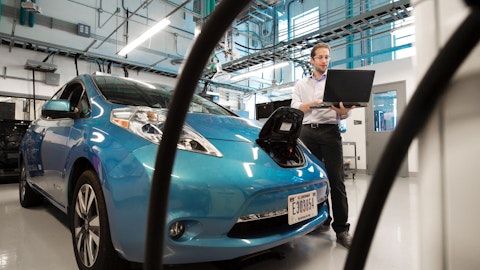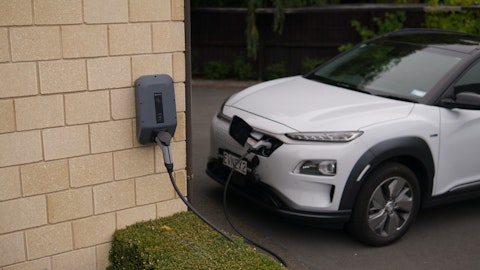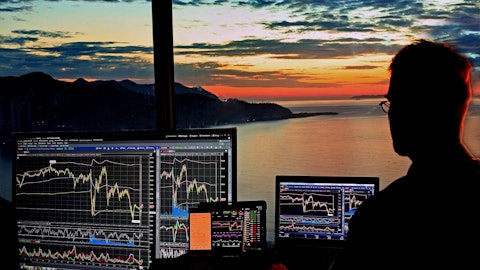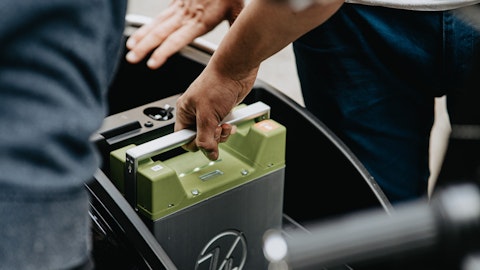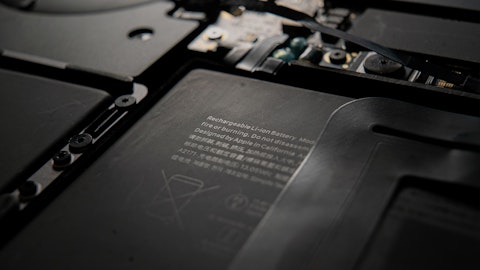Craig Webster: Colin, sorry, I will just add a little bit on the gross margins, because it’s really relevant. I mean this year, we did adjusted 8.2%, and it’s pretty fair. We adjust out that non-cash SBC expense from production. It’s not true production costs now. To do that, we made nine different cells this year to get to that adjusted 8.2%. Now, this is a real good thing that we are highlighting on the backlog like over 80% of the backlog is 53.5 amp hour. So, the gross margin improvement is going to come from the introduction of that cell and then as we scale it, right? And what we are pointing you towards is let’s assume and hope as you can make the assumption, we will give you the forecast. We will give you the backlog.
We have told you what the Asia Pacific and China business was, and not much of that is in backlog. So, I think we are telling you that we are really confident on €˜23. Let’s start to think through how do we get to profitability in €˜24. We end the year, we have $1 billion of revenue potential in 53.5. Now, I am not saying it’s going to be at 100% utilization in €˜24, but it’s going to be a high utilization because of the demand we have and demand that’s being created by how good that technology is. So, let’s say we can get to 75% utilization in €˜24. That’s $750 million just on 53.5 amp hour alone. Given where we are with demand and how like high tower capacity is, so we should €“ I think we can make about $150 million gross profit.
And then like is our job as a management team like manage our cash operating expenses like through to that time. Now, they have got to grow because we are in a high-growth phase. But I think realistically, we can manage them to about $150 million in €˜24. And at that point, you are getting to breakeven, and I didn’t even put any iron numbers into that €˜24.
Yang Wu: Yes. Colin, for the cost control side, most of the cost come from raw materials. Since we have one single product with big volume, this gained us a lot of negotiation power with our suppliers. So, now we have a long-term contract fluctuated with the lithium index. And we discounted from this index, which guarantee our profitability. That’s very good. We never had this before because we used to have lots of different products and small volume. Right now, we have one single product, one supply source and firm up all the supplies.
Colin Rusch: Perfect. Thanks so much guys.
Operator: Our next question comes from George Gianarikas with Canaccord Genuity. Please state your question.
George Gianarikas: Hey. Good afternoon everyone. Thanks for taking my question. I would like to start with the energy storage market. Curious as to how you are able to put all the pieces together and turn around the products so quickly. Thank you.
Yang Wu: Thanks. Good question. And I constantly ask myself about as well. And actually, the battery cell and the battery technology we put on the vehicle is testing for a long time, already like a 3 years testing. And the vehicle application is much, much difficult than container. Container is never moved. Vehicle is vibrating, moving in a different contingency. And you sell the product in the container. We have similar modules setting in the container. It’s pretty easy and if we have experience to put it on the vehicle. That’s why we set up a manufacturing in Mexico to take advantage of the low level cost to make more competitive also. And at a border of Mexico, the Mexicali, is very close to most of the ESS application fields, which is in the Southwest out of United States. Thank you.
George Gianarikas: Great. And maybe as a follow-up, can you kind of help us understand the potential margin difference between the U.S. businesses and other geographies?
Craig Webster: Wu-san, do you want me to take that one?
Yang Wu: Yes.
Craig Webster: Yes. And I would say, George, a lot of it really comes down to the IRA benefits, unless the EU announced something similar. What we are getting is on cloud of production, cloud does both sell our modules. So, we are getting $45 a kilowatt hour. And what you translate that through is probably a 15-point to 20-point uplift in your gross margin. And then the other part of it is just how incremental it is, the cash flows, because what we see is maybe assured of a 2-year payback on your capital investment. So, you essentially got free cash flow after that.
George Gianarikas: Great. Thank you everyone for taking my questions.
Yang Wu: Thanks. George.
